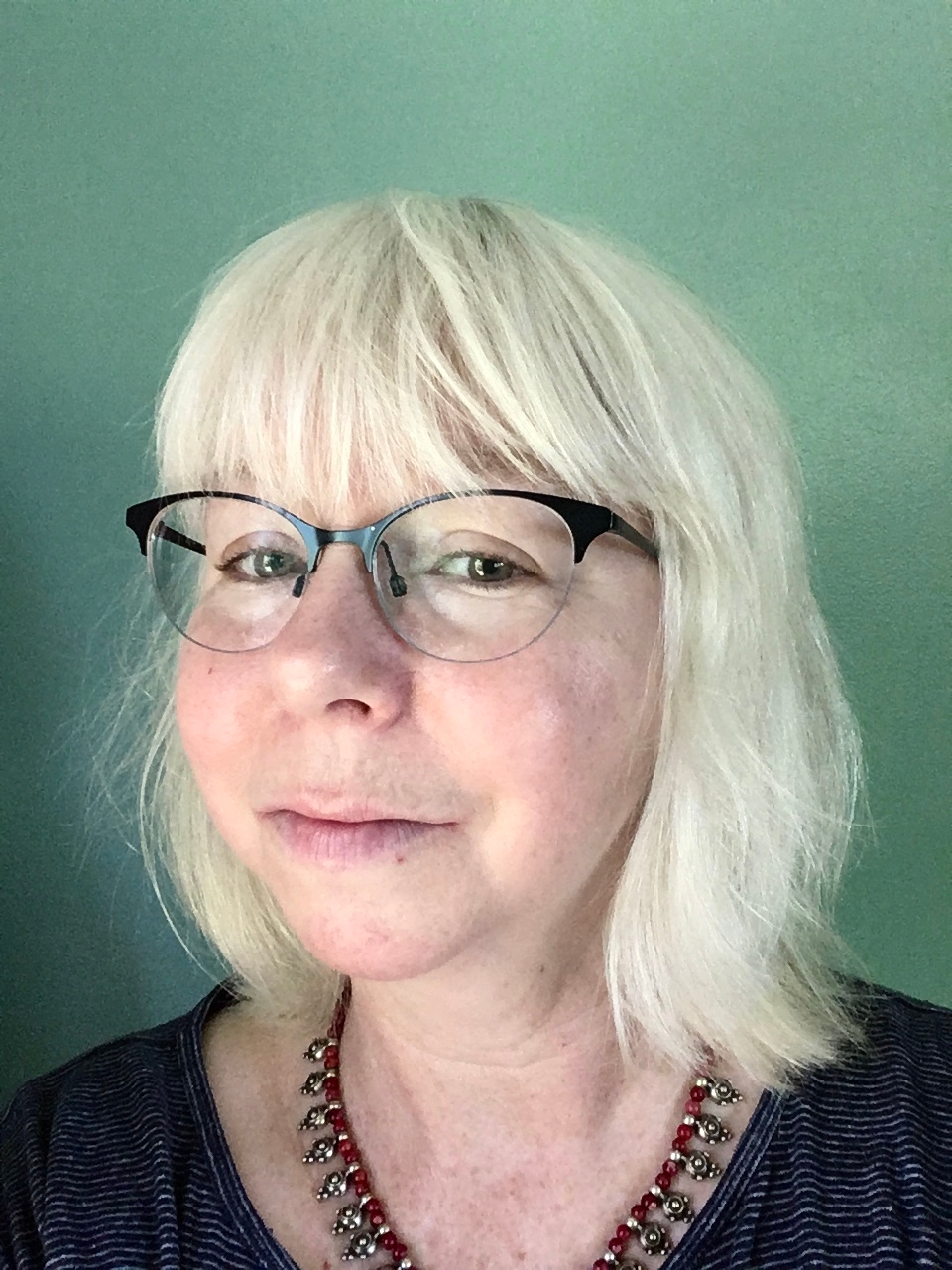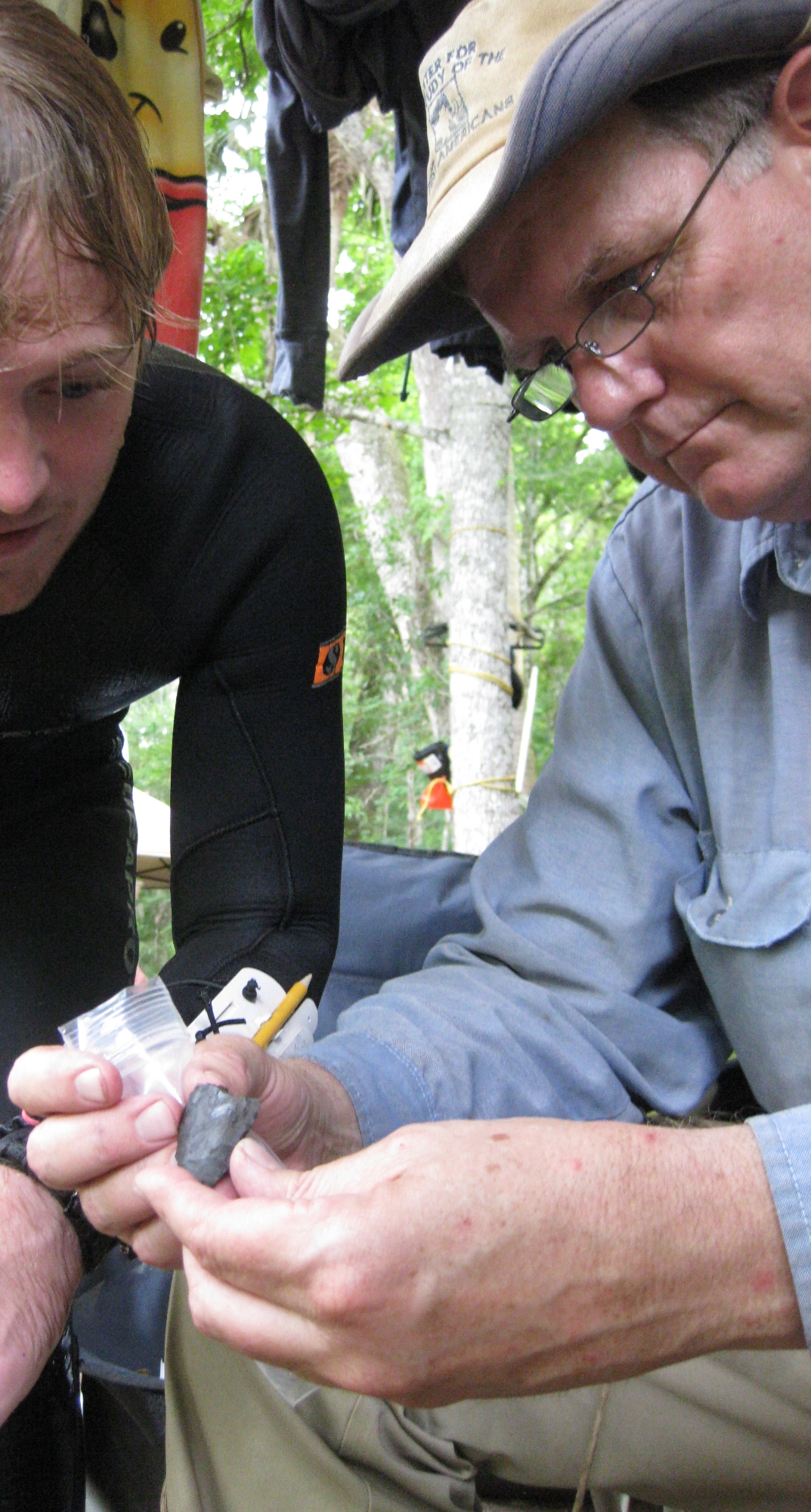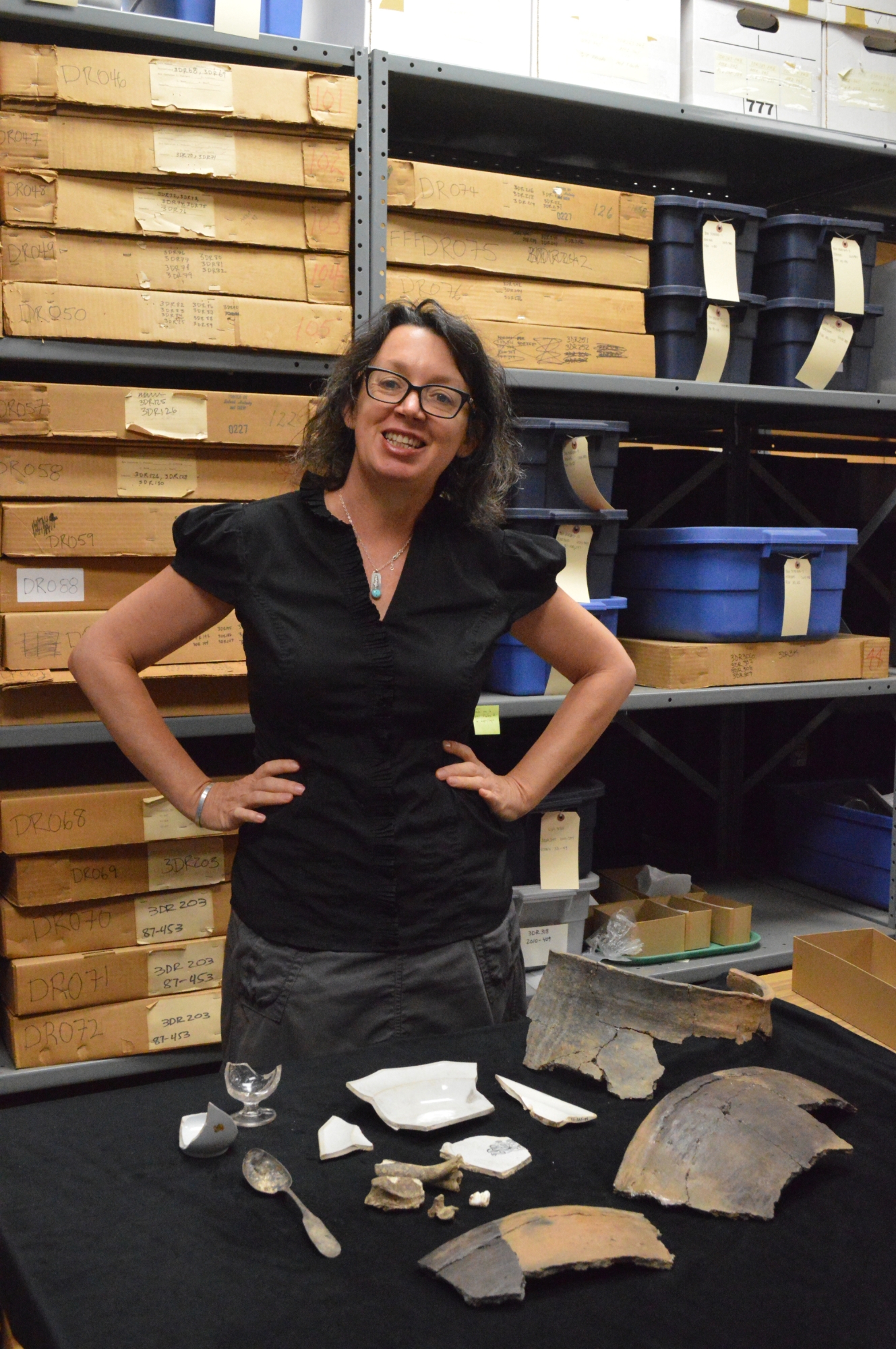
Archaeology of Migration in America
ANTH 4333
This course will draw from the work of archaeologists to explore the long-term histories of human migration and movement in America. We will investigate why movement has been so critical for our ancestors, the different types of movement, why people migrate, and consider the history of voluntary and forced migrations in our continent’s history.
We will discuss a range of topics from the earliest migrations to America more than 14,000 years ago, how movement was an important strategy for Native peoples here for thousands of years, the history of forced migrations (captives and slaves, the 1830 removal of Native Americans to Oklahoma, internment camps), and migration along the southern border today. Migration is part of our society and archaeology can provide insights into the long history and variability of movements in our past and present.
Public Lecture Series
Information for this Lecture Series will be posted here as it comes in.
Genomic Diversity in the Caribbean: A Complex Legacy of Taíno, African and European Ancestries

February 10, 2022
4:00 PM
Bizzell Library LL 118
Theodore Schurr, Ph.D.
Professor in the Department of Anthropology at University of Pennsylvania
Consulting Curator in the University of Pennsylvania Museum of Archeology and Anthropology
Head of the Laboratory of Molecular Anthropology at University of Pennsylvania
In this talk, I will discuss research conducted in native descendant communities from islands in the Greater (Puerto Rico, Dominican Republic) and Lesser (Trinidad, St. Vincent) Antilles. While these studies have helped to elucidate the initial peopling of the Caribbean region by indigenous populations, they also reveal the biological and cultural impacts of European colonization, African slavery and East and South Asia indentured labor over the past 500 years. I also explore implications of these genetic data for the reckoning of ancestry, history and identity in these Caribbean communities.
Theodore Schurr is a Professor in the Department of Anthropology, a Consulting Curator in the University of Pennsylvania Museum of Archeology and Anthropology, and the Head of the Laboratory of Molecular Anthropology at Penn. For over thirty years, he has investigated the genetic prehistory of Asia and the Americas through studies of mtDNA, Y-chromosome and autosomal DNA variation. Current projects include studies of genetic diversity in indigenous populations of Canada, the United States, Mexico and the Caribbean. His research group is also exploring the population histories of Georgia (Caucasus), Pakistan and Kazakhstan through collaborative studies in those countries. Other projects are investigating mitochondrial DNA (mtDNA) diseases in human populations, and the role of the mtDNA in complex diseases, metabolism and adaptation.
Captives in Small-Scale Societies: Agents of Cultural Transmission and Sources of Power

March 1, 2022
4:00 PM
Bizzell Library LL 118
Dr. Catherine M. Cameron
University of Colorado, Boulder
Captives were remarkably common in ancient times. Societies of all levels of complexity took captives, most commonly women and children. Archaeologists largely overlook captives as social actors, yet captives brought new cultural practices and new ideas to many of the societies they unwillingly joined. Captives were also important sources of social and economic power for their captors, even in small-scale societies. Using cross-cultural comparison and analogy I explore the substantial impacts captives had on small-scale societies. I emphasize that the presence of captives should disabuse archaeologists of ever imagining that small-scale societies were “egalitarian” and suggest ways we can investigate links between captives and power.
Catherine M. Cameron is Professor Emerita in the Department of Anthropology at the University of Colorado. She works in the northern part of the American Southwest, focusing especially on the Chaco and post-Chaco eras (AD 900–1300). Her research interests include prehistoric demography, the evolution of complex societies, and processes of cultural transmission. She has worked in southeastern Utah at the Bluff Great House, a Chacoan site, and in nearby Comb Wash. During the past fifteen years, she has undertaken a study of captives in prehistory, as a special type of migrant that has been largely overlooked by archaeologists.
Holes in Our Moccasins, Holes in Our Stories: Apachean Origins and the Promontory Caves

March 8, 2022
4:00 PM
Bizzell Library LL 118
Dr. John W. (Jack) Ives
Professor, Department of Anthropology
University of Alberta
In 1930-31, Julian Steward recovered hundreds of well-worn moccasins in Utah’s Promontory caves—along with mittens, bison robe fragments, bows, arrows, pottery, bone and stone tools, cordage, gaming pieces, and abundant faunal remains—making for one of the most remarkable hunter-gatherer archaeological records in western North America. Our Apachean Origins research has involved new excavations in Promontory Caves 1 and 2 that reinforce Steward’s conclusion that the early Promontory Phase resulted from an intrusive, large game hunting population, particularly of bison, very different from nearby late Fremont communities. We employ a trans-disciplinary search image to evaluate the possibility that the Promontory Phase materials reflect the presence of Apachean ancestors, with a treatment that expands to Franktown Cave (Colorado) and other sites suspected of having Apachean connections.
John W. (Jack) Ives received his B.A. (High Honours) from the University of Saskatchewan in 1974, his M.A. from the University of Alberta in 1977, and his Ph.D. from the University of Michigan in 1985, all in Anthropology. From 2007 to the present, he has been a professor in the Department of Anthropology, University of Alberta, and from 2012-2017, the Landrex Distinguished Professor. Ives was also the founding Executive Director of the Institute of Prairie Archaeology (2008-2019), now the Institute of Prairie and Indigenous Archaeology, where he remains a Research Associate. From 1979-2007, Ives served with the Archaeological Survey of Alberta, the Royal Alberta Museum, and the Historic Resources Management Branch, with senior management responsibilities as Alberta’s Provincial Archaeologist for 21 years, where he was the recipient of three Premier’s Awards. He is an Adjunct Professor at Simon Fraser University and the University of Saskatchewan. Ives was the recipient of the University of Michigan’s Distinguished Dissertation Award, subsequently published as A Theory of Northern Athapaskan Prehistory. With Joel Janetski, he is co-editor of the forthcoming Holes in Our Moccasins, Holes in our Stories, University of Utah Press, an edited volume on Apachean Origins.
Red Pigment in the Great Plains

March 24, 2022
4:00 PM
Bizzell Library LL 118
Dr. Margaret Beck
University of Iowa
Red has long been a powerful color in Native North America. How did Native people make and use red paint in the Great Plains? 19th century documents emphasize the use of synthetic pigments from traders, but there are excellent local paint materials as well. This talk describes red paint in the Central Plains, particularly among Kitkahahki Pawnee people in late 18th century Kansas, using data from archaeological artifacts, the ethnographic and historical records, and experiments with collected geological samples.
Margaret Beck (BA and MA, University of Kansas; PhD, University of Arizona) is an Associate Professor of Anthropology at the University of Iowa. Her research interests include ceramic manufacture; compositional analysis of clays, slips, and paints; experimental archaeology; and household archaeology. In addition to her archaeological research in the Great Plains and US Southwest, she has conducted ethnoarchaeological research in the Philippines, United States, and India. She can be contacted at margaret-beck@uiowa.edu.
Ice Age Explorers - The Archaeological and Genetic Evidence for the Initial Peopling of the Americas

April 12, 2022
4:00 PM
Bizzell Library LL 118
Dr. Mike Waters
Distinguished Professor of Anthropology
Director of the Center for the Study of the First Americans
Texas A&M
Ice Age Explorers—The Archaeological and Genetic Evidence for the Initial Peopling of the Americas
New archaeological and genetic evidence is rewriting our understanding of the first humans to explore and settle the Americas at the end of the last Ice Age. Archaeological sites in North and South America provide evidence that people occupied the Americas by 15,000 years ago. Studies of modern and ancient genomes confirm this age estimate and tell us who these people were and where they came from.
From Caffe’ Latte to Catholic Mass: An Intimate Archaeology of a World War II Italian Prisoner of War Camp

April 26, 2022
4:00 PM
Bizzell Library LL 118
Dr. Jodi Barnes
South Carolina Department of Natural Resources
Camp Monticello, located in southeast Arkansas, served as a Prisoner of War (POW) camp for Italians from 1943 to 1946. The spatial arrangement of the camp, which consists of two officer’s compounds and three enlisted men’s compounds, was structured according to the central principles of surveillance, discipline, and control. The food, clothing, and possessions of Camp Monticello's inmates were provided by the institution. From a mess hall menu to a POW built chapel, archeological research reveals intimate information about the men and the ways they worked together to maintain their cultural traditions and regain some of their individuality.
Dr. Jodi A. Barnes is an Archeologist with the South Carolina Department of Natural Resources. She received her Ph.D. in Anthropology from American University in Washington, DC and her Graduate Certificate in Women and Gender Studies and B.A. in Anthropology from the University of South Carolina. She recently left the University of Arkansas where she was a Research Associate Professor and Station Archaeologist with the Arkansas Archeological Survey. Her research interests range from the archeology of the African diaspora to World War II Home Front Heritage.
Migrant Deaths along the US-Mexico Border

May 3, 2022
4:00 PM
Bizzell Library LL 118
Dr. Jennifer Vollner
Pima County Office of the Medical Examiner
Forensic Anthropologist
The slow mass disaster of fatal clandestine migration across the United States-Mexico border arguably began when borderlines were drawn and enforced and has continued to increase for decades. The Pima County Office of the Medical Examiner (PCOME) located in Tucson, Arizona provides medico-legal investigations for most of the Arizonan portion of the US-Mexico border. As such, the PCOME has handled the vast majority of undocumented border crosser (UBC) deaths in Arizona. From 2000-2021, the PCOME has examined close to 3500 individuals presumed to be migrants. The clandestine migratory routes take individuals through remote areas of the Sonoran Desert while they attempt to travel undetected. Individuals who succumb to these hot and arid conditions are occasionally found shortly after death, but are more often found days to decades after death. Since 2000, the PCOME has an overall identification rate of nearly 63% of UBCs. This relatively high identification rate is due to the multi-agency collaborations between foreign consulates, US government agencies, non-governmental organizations, and the PCOME. Advances in technologies and the availability of additional resources continue to drive the identification of these cases both recently received and via re-examinations of older cases.
Dr. Jennifer Vollner is a forensic anthropologist at Pima County Office of the Medical Examiner in Arizona. She received her PhD from Michigan State University in 2016 and specializes in studying human skeletal variation, especially regarding identifications within a forensic setting.

